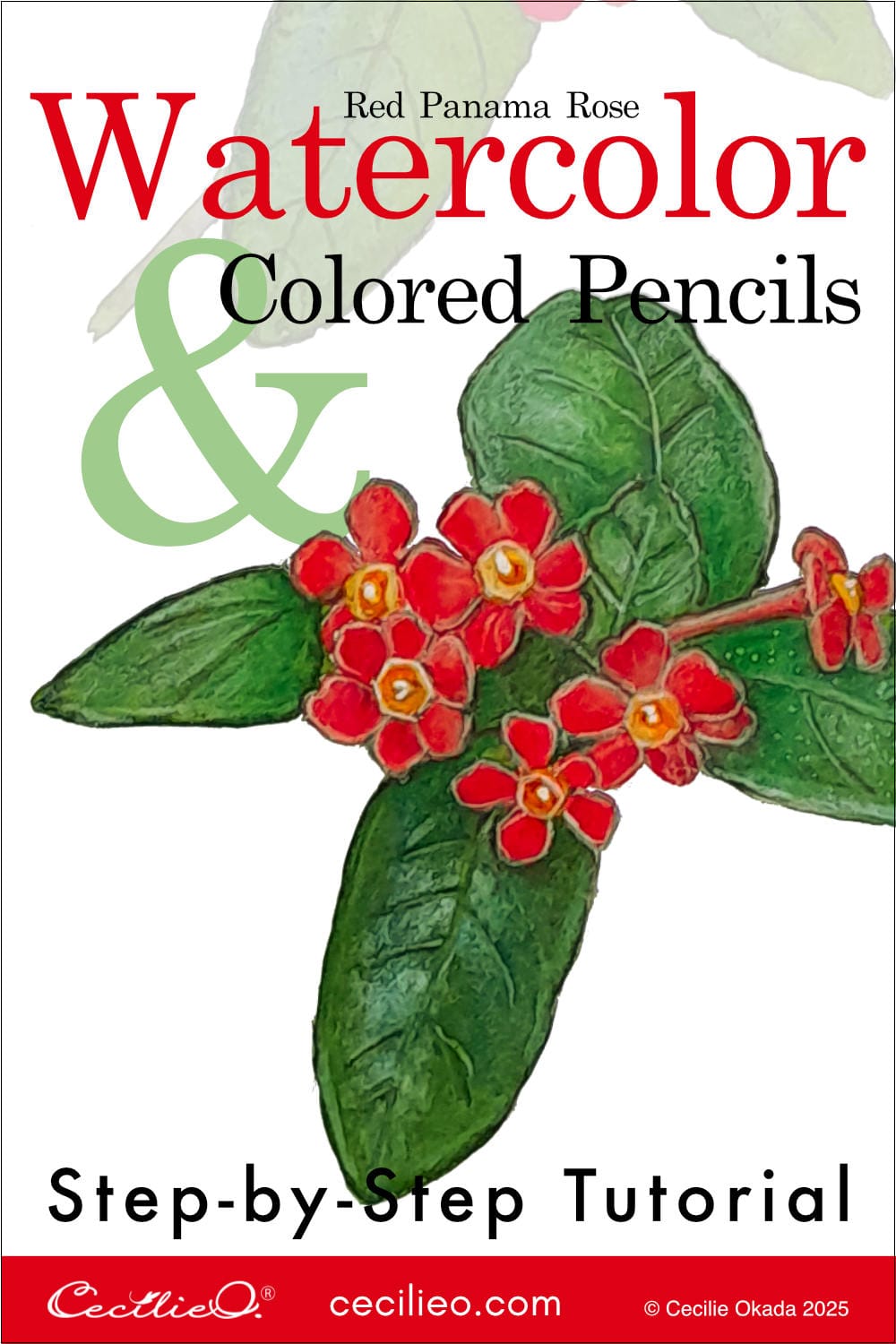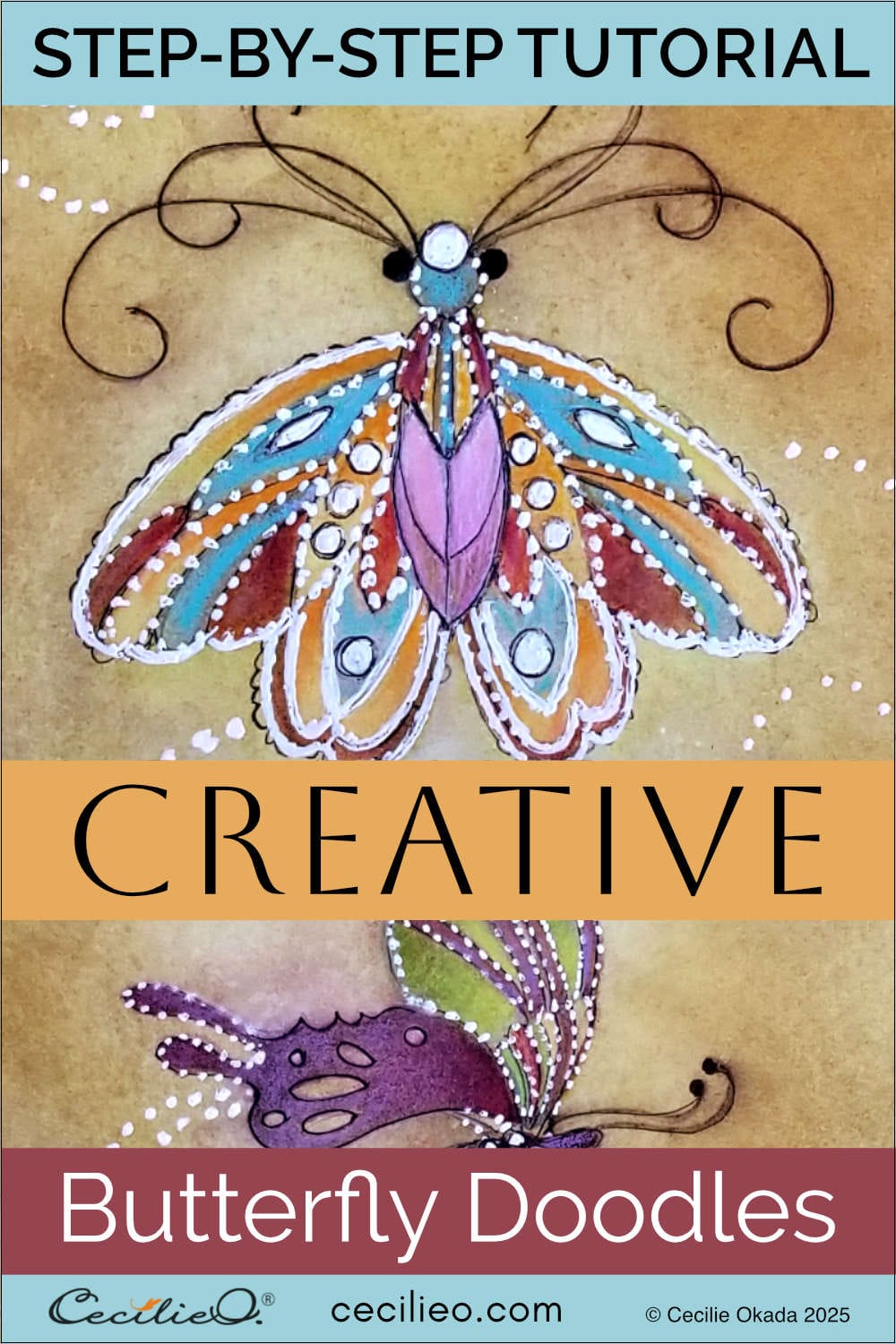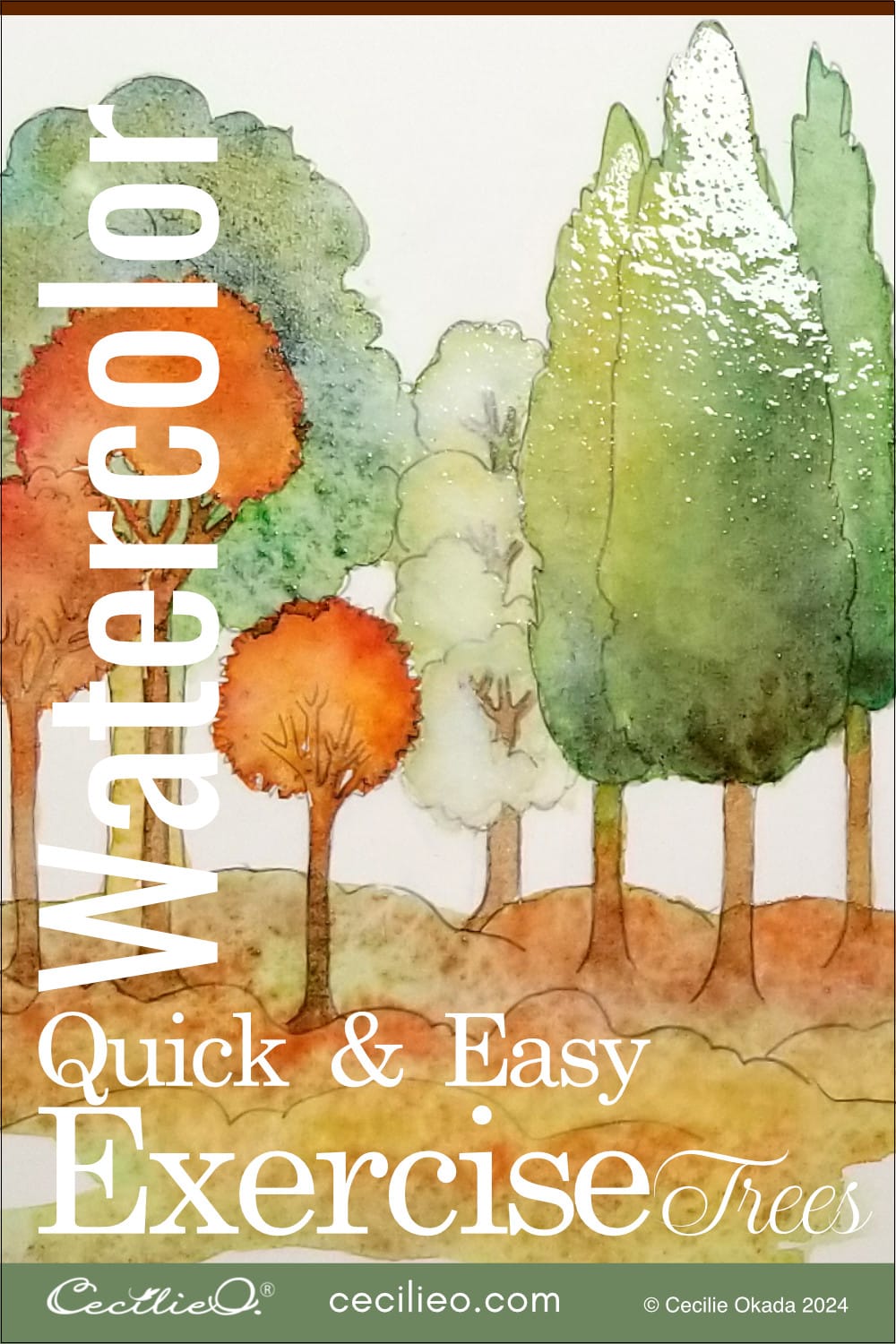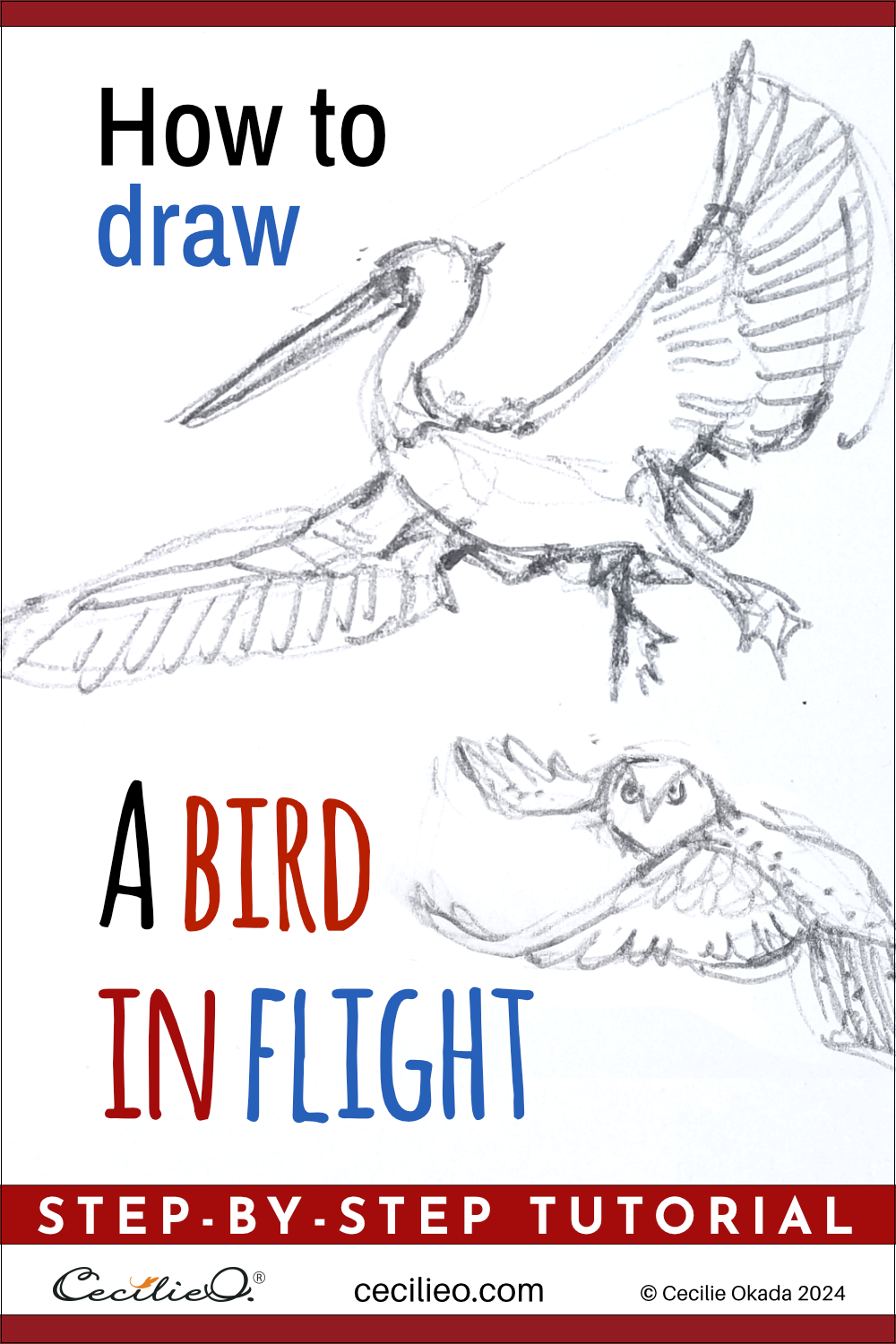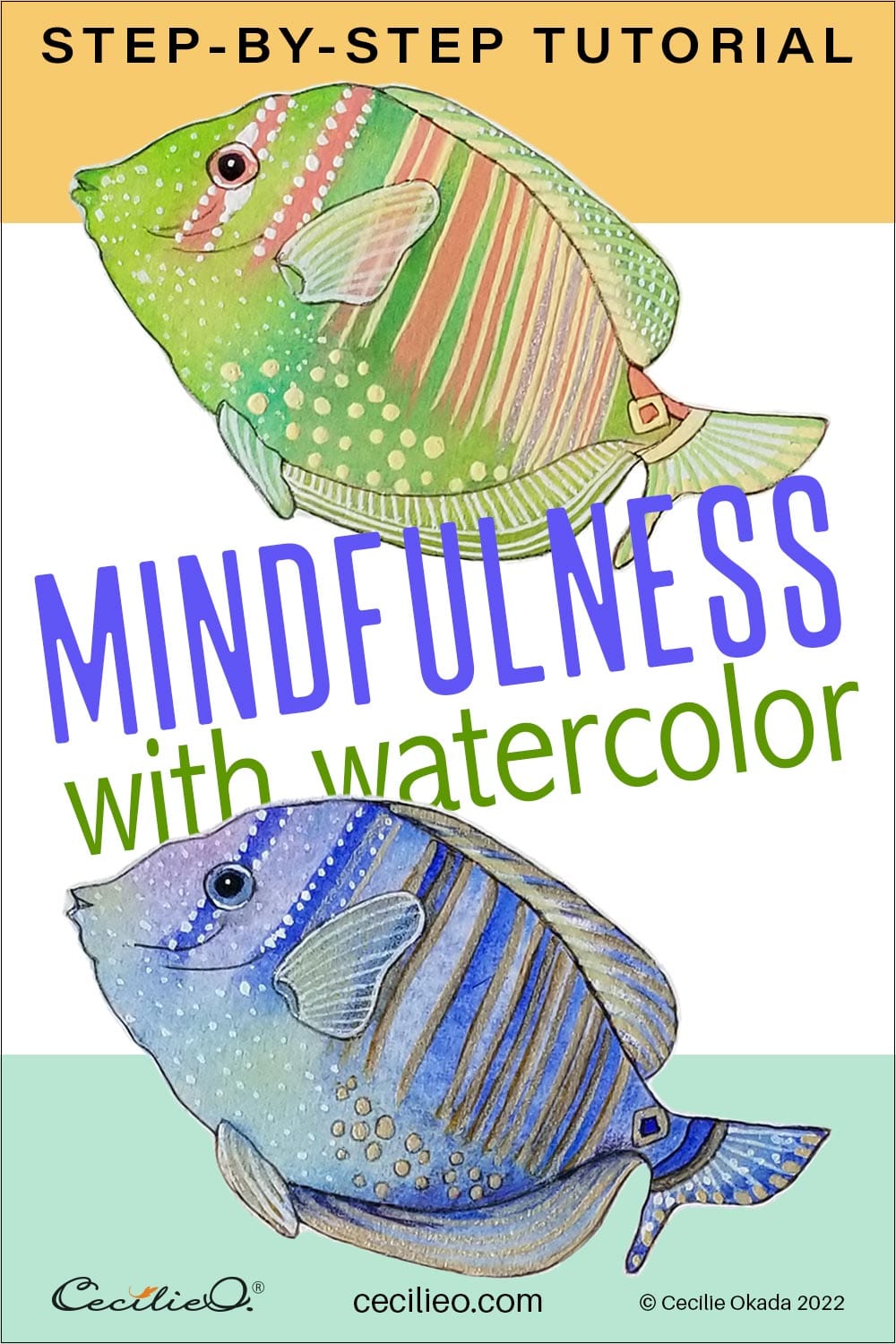
Estimated reading time: 8 minutes
Most people think of butterflies when it comes to colorful creatures. But life in the sea has colors and shapes that will make your jaw drop. Mindfulness in art comes easy when you paint colorful fish. Swing your brush with abandon and get in the flow. In this tutorial, I show you how.
The aim is to nudge you towards free expression when you paint. My fish paintings look nothing like the reference photos included here. These images are simply springboards for getting off to where imagination roams.
Flickr is one of my favorite websites. Professional photographers of the natural world freely share their amazing shots. Sometimes, I’m lucky to stumble on specific photo collections. Take a look at the fish photographs by François Libert. His photo albums are brimming with colorful, fascinating fish. Get inspired!
OK, let’s dive in.
Step 1: Draw the simple fish shape
I like this blue fish because it has only stripes and dots for decoration. (Yes, Mother Nature is a great decorator). It is an easy starting point for our mindfulness in art exercise.

I first made a sketch, then traced the main outline.

The same fish outline is stacked three times on the watercolor paper. Learn how to transfer a drawing to watercolor paper in four different ways.

You can download many free outlines for my tutorials in the One Tree Art Club library.
Step 2: Selecting color inspiration
Once you have selected reference photos, go to our free image to color palette tool. Let the color swatches serve as a starting point for your painting. Below are the fish images that inspired me.



Step 3: Watercolor the basic colorway for each fish

Use a lot of water when you paint this first step. First, paint with plain water within the boundary of the outline.

Add more colors and let them blend seamlessly in the wet flow.

The second fish takes inspiration from the green and apricot fish image.

The third fish takes inspiration from the turquoise and pink fish.

Taking cues from the photos, I painted stripes on each fish with a secondary color.

Step 4: Take advantage of opaque gouache for patterns
The blue stripes were easy to do with watercolor. Darker blue on light blue is no problem layering.
The peach color on the green is another story. If I were to use regular watercolor for this, I would have to paint the stripes separately, not on top of the green. To be able to paint on top, use opaque gouache. The only gouache I have is white. Gouache is a densely pigmented and pasty kind of watercolor. Mixing it with regular watercolors is no problem. This way, you can make any opaque color.

Step 5: Paint your way into mindfulness through art
Time for more decoration. Inspired by the blue fish, I added some simple details. But hold on. I have one more gouache in my toolbox: pearl white, a metallic gouache. The last time I shopped for art supplies, I bought the tube by mistake. Nice. It works perfectly for fish decor.

Step 6: Oh my, the pink fish had to change.
The uneven blue lines and whatnot did not work well (in my head). The beauty of painting on cotton watercolor paper is that you can soak up and erase colors. With a wet sponge, I removed all the paint and started fresh again. But the moist paper has to become bone dry before painting anew.
I went for bright pink and purple.

Step 7: Deeper into the flow
Back and forth I went painting the details. This way? No. That way? Yes. No probs with gouache. A wet sponge and a hair dryer turn the to and fro into a breeze.

I used colored pencils here and there, too.

Step 8: Decide the fish can go no further. All done.
Happy, relaxing, mindful painting to you!

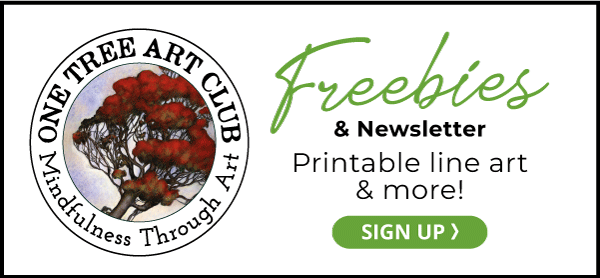



Here is a list of art materials you need for this tutorial: Guide to Art Supplies




